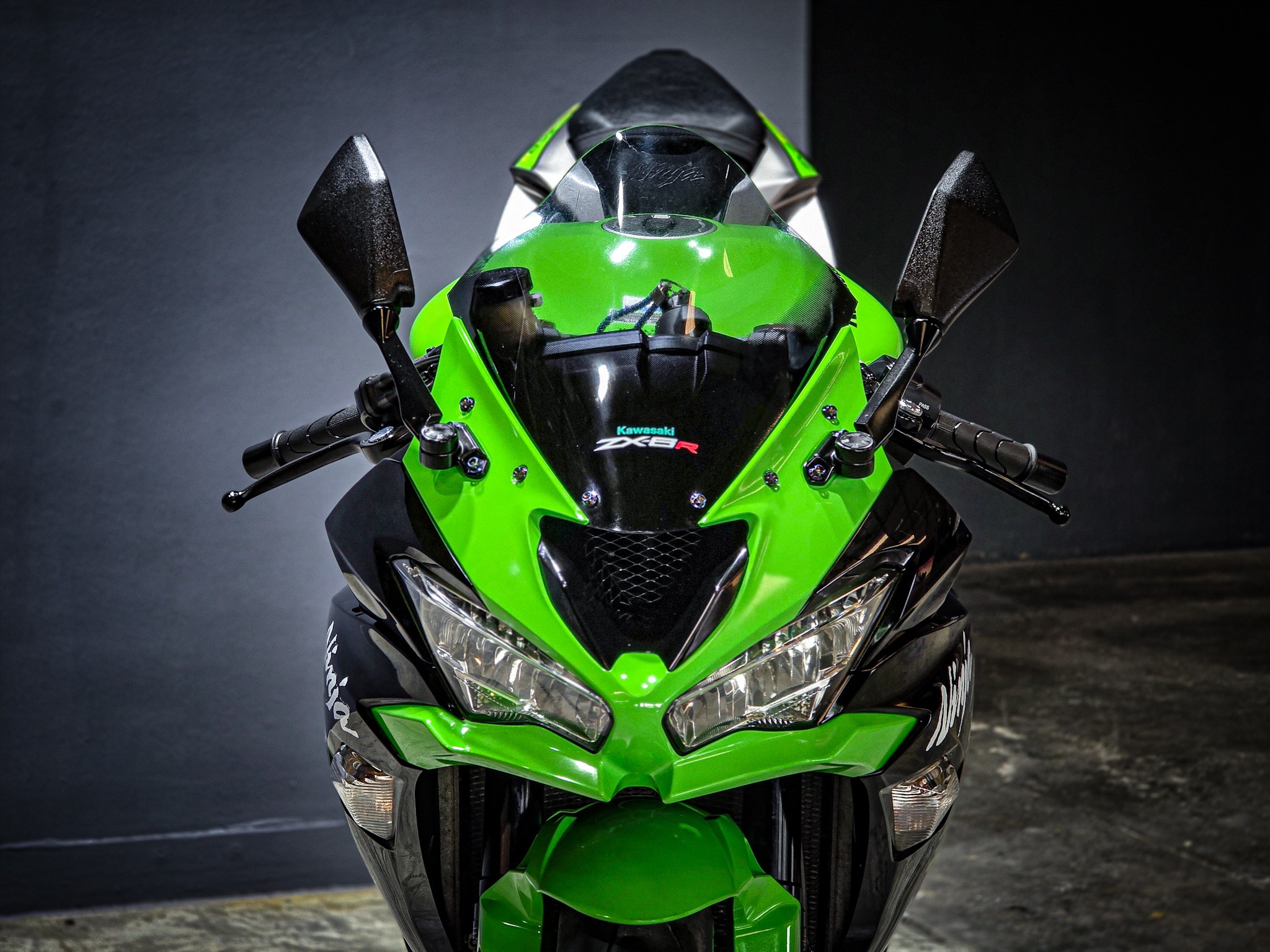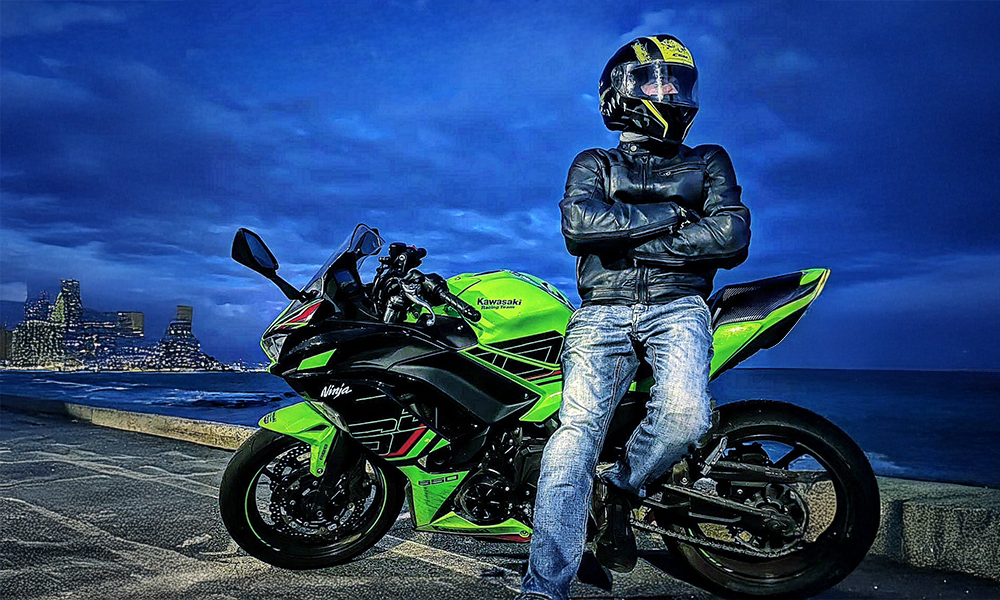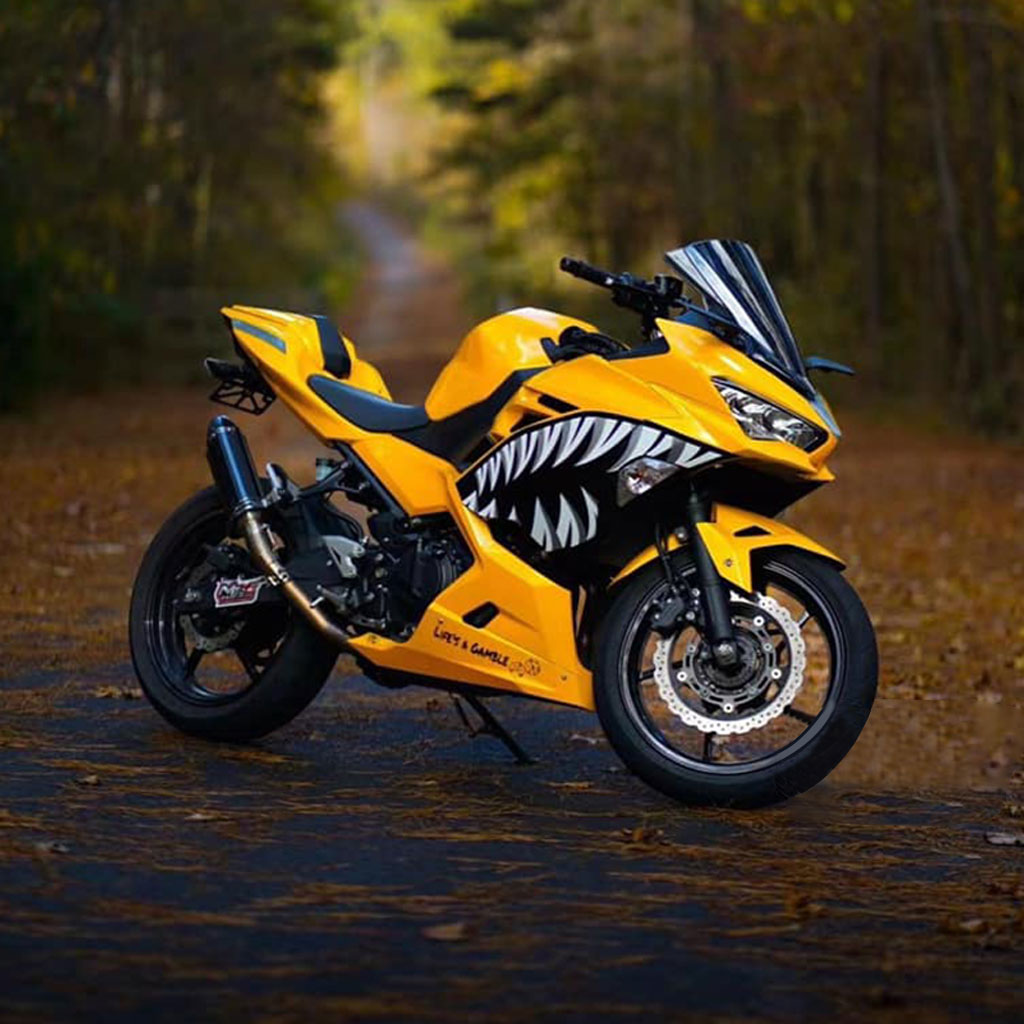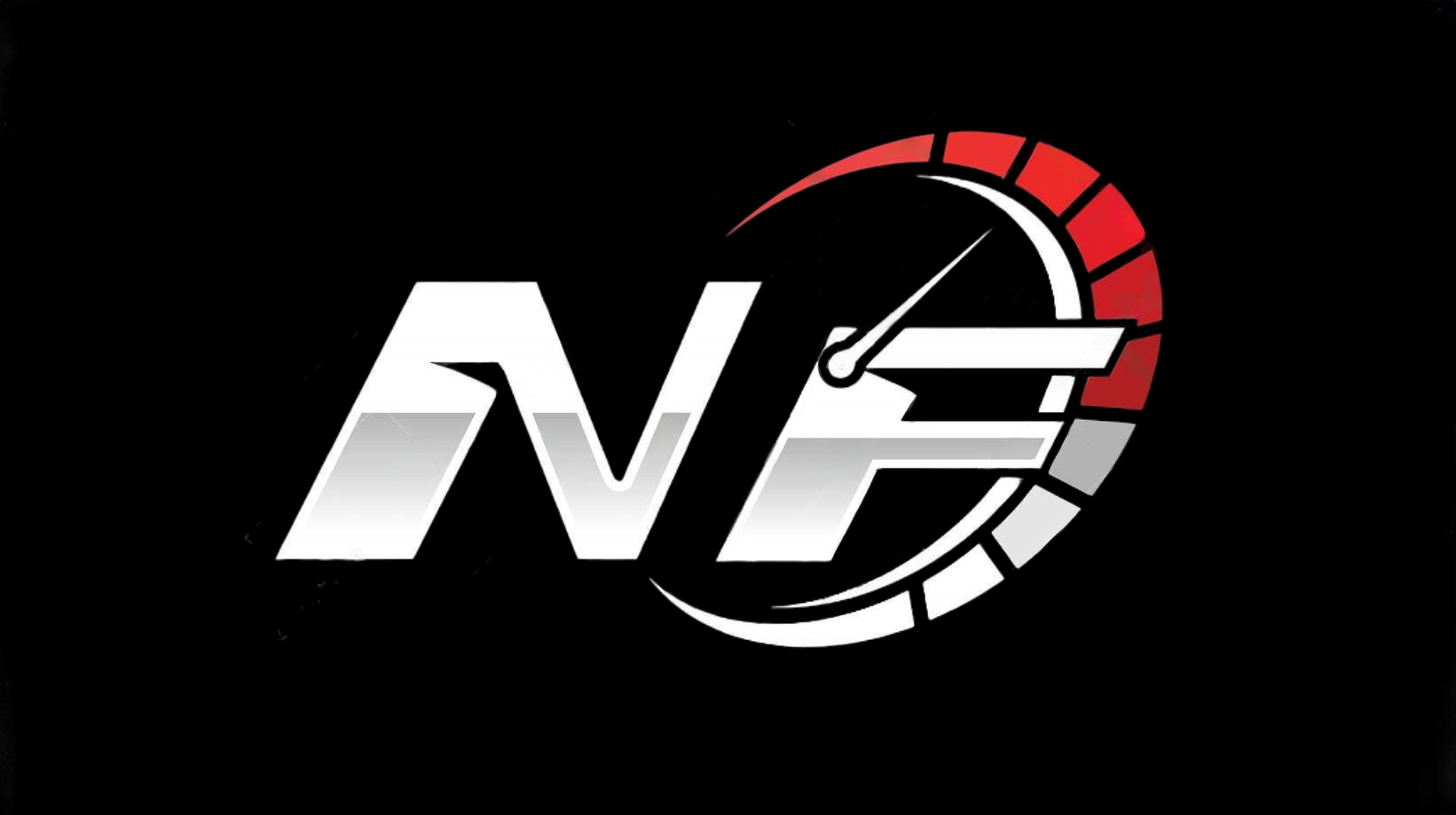Riding at Night: 6 Custom Mods That Keep You Safer After Dark

Riding at night can seem dangerous. The National Highway Traffic Safety Administration says 37% of motorcycle accidents happen after dark. Most deadly crashes happen on weekend nights. Many riders worry about not seeing well, hidden dangers, and drunk drivers. Custom motorcycle modifications help you stay safer. The right custom upgrades make your motorcycle easier to see. You can also see more of the road. Custom motorcycles help you feel more confident when you ride at night.
Key Takeaways
Upgrade to LED lighting for brighter, wider light that helps you see better and saves your battery.
Use reflective tape on your bike and gear to make yourself visible from far away to other drivers.
Add a helmet brake light to put a bright stop signal at eye level for drivers behind you.
Install tinted screen covers to reduce glare on your dashboard and keep your focus on the road.
Choose crash bars and better rearview mirrors to protect your bike and improve your view while reducing glare.
LED Lighting
What It Is
LED lighting is a common upgrade for motorcycles. You can change your old bulbs to new led headlamps. These lights use light-emitting diodes, not filaments. You can add main led headlamps or extra lights like Clearwater Erica lights. This helps you see better at night. Many riders pick custom lighting to make their bikes look cool and stay safe.
Safety Benefits
Good lighting is very important at night. You need to see the road and let others see you. LED lights are brighter and light up more area than halogen bulbs. This helps you spot dangers sooner and react faster. Here is how LED motorcycle lights compare to halogen lights:
Feature | LED Motorcycle Lights | Traditional Halogen Lights |
|---|---|---|
Brightness | Usually brighter, so you see better | Not as bright, depends on the model |
Energy Efficiency | Uses much less energy, saves battery power | Uses more power, drains battery faster |
Battery Impact | Less battery strain, battery lasts longer | More strain, battery wears out sooner |
Lifespan | Lasts almost 10 times longer than halogen bulbs | Shorter life because filaments break easily |
Durability | Stronger and less likely to break | Filaments break more easily |
Response Time | Turns on and off faster | Slower to turn on and off |
Cost | Costs more at first but saves money over time | Cheaper at first but costs more to keep up |
LED headlamps use less power, so your battery lasts longer. The light is whiter and cleaner, so you see signs and obstacles better. At night, do not ride faster than your lights can show. This keeps you safe and gives you time to stop.
Tip: LEDs help your battery last longer and may save fuel because they use less power.
Installation Tips
You can put in LED lights yourself or get help from a shop. First, check your motorcycle’s manual for bulb sizes. Most led headlamps fit into the regular spot. If you want more lights, buy kits with easy steps. Aim your lights right. If they are too high, you might blind others. If too low, you cannot see the road well. Test your lights before every ride. Custom lighting looks cool and helps keep you safe.
Reflective Tape
What It Is
Reflective tape is a bright, shiny strip that sticks to your motorcycle or gear. You can find it in many colors and shapes. Some riders put it on their helmets, jackets, or even on the wheels. This tape bounces light back to drivers, making you stand out in the dark. Microprismatic tape, like 3M™ Diamond Grade™, shines even brighter and works at wide angles. You can use reflective tape as a custom touch to make your bike unique and safer.
Safety Benefits
You want drivers to see you from far away at night. Reflective tape helps with that. Studies show that retroreflective gear can make you visible from up to 1,500 feet. That gives other drivers 10 to 15 more seconds to react. That extra time can save your life. When you add tape to your helmet, jacket, or bike frame, you light up your whole outline. Drivers spot you faster. Wheel and frame tape also help cars see you from the side. If you wear a high-visibility vest with reflective panels, you become even harder to miss.
Note: Certified reflective gear that meets standards like ANSI/ISEA 107 or EN 13356 gives you the best nighttime visibility.
Application Tips
You can put reflective tape almost anywhere on your bike or gear. Here are some tips to get the most out of it:
Clean the surface before you stick the tape on. Dirt or oil makes it fall off.
Place tape on moving parts like wheels or arms. This movement catches drivers’ eyes.
Use long strips on your helmet, chest, back, and legs for a bigger glow.
Pick durable tape that resists rain, dirt, and sun. Some tapes last up to 10 years.
Combine tape with bright LED lights for the best effect.
Reflective tape is easy to use and makes a big difference when you ride at night.
Helmet Brake Light

What It Is
A helmet brake light is a small, bright light that you attach to the back of your helmet. When you slow down or stop, the light turns on. This puts a bright signal right at eye level for drivers behind you. Most helmet brake lights use LEDs, so they shine very bright and last a long time. You do not need to mess with wires or apps. Some models use smart sensors to know when you brake. You can charge them with USB-C, and they work in all kinds of weather.
Safety Benefits
You want drivers to notice you, especially at night. A helmet brake light makes you stand out. It sits higher than your bike’s tail light, so it is right in a driver’s line of sight. This helps drivers react faster when you stop. Many riders say they feel safer with a helmet brake light. The extra light can make a big difference in heavy traffic or on dark roads.
Tip: Eye-level lights are easier for drivers to see, even if your bike’s tail light is blocked.
Choosing and Installing
You have many choices for helmet brake lights. Here are some popular features you might want:
Ultra-bright LEDs for day and night use
Wireless design with no wires or apps needed
USB-C charging for fast power-ups
Weatherproof build for rain or shine
Long battery life, often 8-18 hours per charge
Multiple light modes like pulsing or stealth
One top pick is the STEELMATE H2 Wireless Helmet Brake Light. Check out its features:
Feature | STEELMATE H2 Wireless Helmet Brake Light |
|---|---|
Connection Type | Wireless, no ECU required |
Battery Life | Up to 18 hours rechargeable |
Light Modes | 10 streaming modes + intelligent sleep mode |
Installation | Easy, super sticky, no wires |
Compatibility | Fits all helmet brands and models |
Safety Features | Automatic brake light via G sensor |
To install, just clean the back of your helmet and stick the light on. Make sure it is straight and secure. Charge it before your ride. You do not need any tools. This custom upgrade takes only a few minutes but gives you a big boost in safety.
Tinted Screen Covers
What It Is
Tinted screen covers are thin sheets made from materials like lexan or acrylic. You place them over your motorcycle’s dashboard or digital display. These covers come in different shades, from light smoke to dark tint. Some riders use them to cut down on glare from headlights, streetlights, or even their own bike’s lights. You can find tinted covers that fit most motorcycles, or you can order a custom one for your bike.
Safety Benefits
Riding at night can make your dashboard or GPS screen look too bright. Glare from your screen can distract you or make it hard to see the road. Tinted screen covers help by dimming the harsh light. They also block reflections from streetlights or passing cars. This means you can focus on the road, not on a glowing screen. Less glare helps your eyes adjust to the dark faster. You spot hazards sooner and react quicker. Many riders say tinted covers make night rides feel safer and more comfortable.
Tip: Tinted lexan covers work best because they are strong and resist scratches. They also last longer than cheap plastic.
Selection Tips
You want a cover that blocks glare but does not hide important info. Here are some tips to help you pick the right one:
Choose a light or medium tint for digital displays. Dark tints can make it hard to read your speed or GPS.
Look for covers with anti-scratch and anti-fog coatings. These features keep your screen clear in all weather.
Test the cover at night before you ride far. Make sure you can see all your gauges and warning lights.
If you use a GPS or phone mount, check that the cover does not block your view.
Ask your local shop if they can cut a cover to fit your bike’s dashboard.
A good tinted screen cover can make your night rides safer and more enjoyable. Try one out and see the difference for yourself!
Crash Bars
What They Are
Crash bars are strong metal bars that you attach to your motorcycle. You usually see them on both sides of the bike, wrapping around the engine or frame. These bars stick out a bit, so if your motorcycle tips over, the bars hit the ground first. You can find different types of crash bars, each made for a certain kind of riding. Some are light and simple, while others are heavy-duty for tough roads.
Here’s a quick look at the main types of crash bars and how they protect your bike:
Type of Crash Bars | Material & Build | Coverage Area | Protection Focus | Best For |
|---|---|---|---|---|
Factory Crash Bars | Mild steel, basic coating | Engine only | Engine protection | Everyday riding |
Aftermarket Bars | Thick steel, sometimes stainless | Engine, frame, gas tank | More coverage, frame and tank too | Off-road, rough terrain |
Lightweight Bars | Thin tubing, lighter steel | Engine area | Balance of weight and safety | Light dirt roads, city use |
Heavy-Duty Bars | Thick, large-diameter steel, stainless | Front half of bike | Maximum protection for engine and tank | Aggressive off-road, adventure |
Stainless steel bars last longer in wet weather because they do not rust as easily.
Safety Benefits
Crash bars give you extra protection if you fall or hit something, which is even more important at night when you might not see hazards as well. If your motorcycle tips over, the bars take the hit instead of your engine or gas tank. This can save you from expensive repairs. Crash bars also help keep your legs safe by holding the bike up a bit higher. They do not protect everything, but they do a great job guarding the most important parts. Many riders add crash bars as a custom upgrade for peace of mind.
Installation Tips
You can install crash bars yourself if you have some tools and patience. Always check the instructions that come with your bars. Make sure you line up the mounting points with your motorcycle’s frame. Tighten all bolts evenly so the bars stay strong. If you ride in the rain or on salty roads, pick stainless steel bars to avoid rust. If you are not sure about the fit, ask a local shop for help. Test the bars by gently pushing on them to make sure they do not move.
Rearview Mirrors
What They Are
Rearview mirrors help you see what is behind you while you ride. You find them on both sides of your handlebars. Some mirrors are simple, while others have special features for night riding. You can pick from many shapes and sizes to match your style or your motorcycle’s needs. Some riders even choose custom mirrors to get a better view or add a cool look to their bike.
Safety Benefits
Riding at night can make it hard to see cars behind you. Bright headlights from other vehicles can blind you or cause eye strain. That is where advanced rearview mirrors help. Many new mirrors use auto-dimming technology. These mirrors sense bright lights and darken themselves, so you do not get blinded by headlights. This makes your ride safer and more comfortable. Some mirrors use a prismatic wedge design to bend light away from your eyes. You also find mirrors with night vision or infrared features. These help you see better in fog, rain, or even snow. Wide Dynamic Range (WDR) technology in some mirrors or dash cams balances the brightness, so you do not miss anything important. All these features work together to keep your eyes safe and help you spot dangers faster.
Tip: Auto-dimming mirrors can stop the Troxler Effect, which is when you get a blind spot from staring at bright lights too long.
Adjustment Tips
You want your mirrors set up right before you ride. Here are some easy steps:
Sit on your motorcycle in your normal riding position.
Adjust each mirror so you see a bit of your shoulder and a wide view of the road behind.
Make sure the mirrors do not point at the sky or your arms.
Check your mirrors at night. If you see too much glare, try tilting them down a little.
Clean your mirrors often. Dirt or water spots can make it hard to see, especially after dark.
A good set of mirrors, adjusted the right way, can make every night ride safer and less stressful.
Safety Mods Summary Table
Mod
You might wonder which custom upgrades give you the most safety when you ride at night. Here’s a handy table that shows each mod and its main benefit. Use this as a quick guide when you plan your next upgrade.
Custom Mod | Core Benefit |
|---|---|
LED Lighting | Brighter, wider light helps you see and be seen in the dark |
Reflective Tape | Makes you stand out to drivers from far away |
Helmet Brake Light | Puts a brake light at eye level for drivers behind you |
Tinted Screen Covers | Cuts down glare from your dashboard or GPS so you can focus on the road |
Crash Bars | Protects your bike and legs if you tip over or hit something at night |
Rearview Mirrors | Reduces glare from headlights and helps you spot cars behind you |
Core Benefit
Tip: Riders usually start with lighting upgrades first. Better lights make the biggest difference for night safety. After that, you can add other custom mods like crash bars or helmet brake lights to boost your protection even more.
This table makes it easy to compare each custom mod. Pick the ones that fit your riding style and needs. You do not have to do everything at once. Start with one or two, then build your safety setup over time.
Riding at Night Tips
Visibility
You want to stand out when riding at night. Bright clothing and helmets help drivers spot you faster. Many safety groups suggest wearing high-visibility jackets or vests with retroreflective strips. These materials bounce light back to drivers, making you shine in headlights. You can also add extra lights to your bike, like auxiliary headlamps or flashing brake lights. Keep your main headlight on at all times, even if the law does not require it. This simple step makes a big difference.
Tip: Choose gear with built-in body armor for extra protection. Just make sure it feels comfortable, especially in hot weather.
Route Planning
Pick your route before you start riding at night. Well-lit roads help you see better and avoid hidden dangers. Try to stick to streets you know well. Avoid areas with lots of sharp turns or poor pavement. If you use a GPS, set it up before you leave so you do not get distracted. Let someone know your route and when you plan to get home.
Check for roadwork or closures before you go.
Plan fuel stops if you ride far from town.
Take breaks to stay alert.
Maintenance
A safe bike is key for riding at night. Check your lights before every ride. Make sure your headlight, taillight, and brake lights work. Clean your mirrors and reflective tape so they shine bright. Worn tires or bad brakes can cause big problems after dark.
Common issues to watch for:
Low tire tread or pressure
Brake pads that look thin or feel weak
Sticky throttle or clutch cables
Battery or wiring problems that cause lights to flicker
Oil leaks or engine noises
Note: Fix small problems right away. Good maintenance keeps you safe and helps you enjoy every ride.
You have six custom mods that boost your safety at night: LED lighting, reflective tape, helmet brake lights, tinted screen covers, crash bars, and better mirrors. Each one helps you see more and be seen by others. When you take steps like these, you lower your risk of accidents and even get a thumbs-up from insurance companies.
Start with one or two mods that fit your ride. Add more as you go.
Brighter lights and reflective gear make you stand out.
Planning your route and staying alert keep you safer.
Reporting your upgrades can even help with insurance.
Stay proactive, build your safety toolkit, and enjoy every night ride with confidence! 🌙🏍️
FAQ
Can I install these mods myself, or do I need a mechanic?
You can install most mods at home with basic tools. LED lights, reflective tape, and helmet brake lights are easy. Crash bars and some mirrors may need extra help. If you feel unsure, ask a local shop.
Will these mods affect my motorcycle warranty?
Most mods like lights or tape do not void your warranty. Big changes, like crash bars, might. Always check your owner’s manual or ask your dealer before you start.
How much do these safety mods usually cost?
Prices vary. Reflective tape costs less than $20. LED lights and helmet brake lights range from $30 to $150. Crash bars and special mirrors can cost $100 or more. You can start small and add more later.
Do I need to tell my insurance company about these upgrades?
Tip: Let your insurance company know about safety upgrades. Some companies give discounts for extra safety gear. It also helps if you ever need to file a claim.
See Also
Essential Safety Tips For Your Very First Motorcycle Ride
Key Safety Advice For Riders Using Motorcycle Fairings
Typical Motorcycle Crash Dangers And Ways To Prevent Them
Top Six Stylish Motorcycles Perfect For New Riders 2025
Popular Motorcycle Fairing Mods Every Rider Should Check Out

